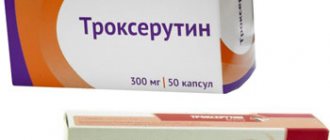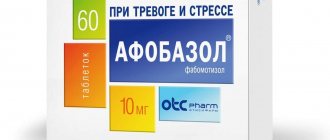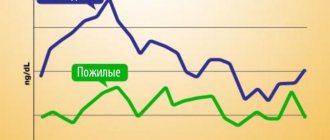- December 20, 2019
- Neurology
- Evgenia Yushkova
A rapidly developing world can influence the human psyche, making it more vulnerable and mobile. The development of a system of modern gadgets, the craze of children and youth with messengers and social networks makes life more comfortable, but less filled with live communication. The result of a dialogue between a person and a computer is manifested in abnormal brain reactions. One of the drugs that helps restore the psyche is Sonapax.
Compound
The active substance of Sonapax, whose international name (INN) is thioridazine, is thioridazine hydrochloride , which contains 10 mg or 25 mg per tablet.
The excipients are: lactose monohydrate, talc, colloidal silicon dioxide, gelatin, corn starch, stearic acid.
The shell contains acacia gum, sucrose, talc, and dye.
Pharmacodynamics and pharmacokinetics
The active substance has a central and peripheral effect on the nervous system. The substance can suppress certain functions of the brain stem, as well as have an antihistamine and quinolytic effect . It does not suppress motor activity, has no antiemetic effect, and estrapyramidal disorders less frequently than other antipsychotics.
In addition, thioridazine has a weak antidepressant, anti-autism and antipsychotic effect.
Absorbed completely from the intestines. Reaches maximum concentration after administration after 2-4 hours. About 35% of the drug is excreted by the kidneys, the rest is excreted through the intestines (both in pure form and in the form of metabolites). through the hematoplacental barrier into breast milk.
Mechanism of action on the body
According to the pharmacological group, Sonapax is an antipsychotic that suppresses human mental activity. The active substance of the drug, inhibiting certain nerve receptors, can have various therapeutic effects. The determining mechanism of action of this drug is the ability to destroy the transmission of nerve impulses between different groups of brain cells.
The neurotransmitters included in its composition block sensitive receptors, as a result, the activity of one or another area of the brain decreases and the desired clinical effect is achieved:
- Antipsychotic. The impact is aimed at the limbic region, which is responsible for the development of hallucinations, the appearance of delusions, manic motives, aggression, and motor hyperactivity.
- Relieving anxiety. The drug works in structures associated with fear, panic attacks, and anxiety.
- Soothing. The medication reduces the information flow going to the brain from peripheral structures. Brain activity slows down, the patient becomes less active and more calm and relaxed.
- Hypnotic. In small dosages, it makes it easier for patients who do not suffer from severe mental disorders to fall asleep. Large doses can lead to a state of constant drowsiness.
- Antiemetic. Dopamine contained in Sonapax tablets can block the part of the brain responsible for the gag reflex. As a result, attacks of nausea and vomiting are eliminated.
- Antihistamine. Additional capabilities of the drug "Sonapax" are manifested in the ability to inhibit receptors responsible for allergic reactions (itching, redness, swelling). However, the antipruritic effect is not so pronounced that the drug can be used to treat allergies itself, and a large number of side effects do not contribute to this.
Despite the ability to influence receptors in the human brain, Sonapax tablets cannot be classified as narcotic drugs. When taking the latter, the patient feels euphoria, peace, satisfaction, which becomes the cause of dependence on the drug. "Sonapax" affects other parts of the central nervous system, without contributing to the development of a pronounced dependence on it.
Indications for use of Sonapax
The drug is prescribed for the following diseases:
- schizophrenia;
- psychomotor agitation;
- withdrawal syndrome;
- psychoses;
- Huntington's disease;
- schizoaffective disorders;
- teak;
- psychosomatic disorders;
- aggressiveness, inability to concentrate for long periods of time;
- neuroses , which are accompanied by sleep disorders, anxiety, obsessive states, psycho-emotional stress, depressive disorders, fear;
- skin diseases that are accompanied by severe itching.
For children, indications for the use of Sonapax are behavioral disorders accompanied by increased psychomotor activity.
Description of the drug
Sonapax is related to antipsychotics. Does not have a powerful antipsychotic effect. This non-medication is characterized by the following properties:
- psychotropic;
- sedative;
- anti-allergenic;
- anxiolytic;
- anticholinergic.
The therapeutic effect, like a sleeping pill, depends on the dosage of the medication. When used in medium dosages, the drug has a sedative effect. If you take minimal doses, you can cope with fatigue, lethargy, lethargy, and apathy. Large dosages are indicated for manic and depressive states, mental disorders, and schizophrenia.
Contraindications
You should not take the drug in the following cases:
- children under 4 years old;
- liver failure;
- pronounced depression of the central nervous system;
- lactase deficiency;
- hypersensitivity to any component of the drug and any phenothiazine derivatives;
- severe depression ;
- arrhythmias;
- lactose or fructose intolerance;
- prolonged QT interval, taking drugs that prolong the QT interval;
- blood diseases;
- decreased activity of the CYP2D6 isoenzyme;
- glucose-galactose malabsorption;
- coma.
The drug should be prescribed with caution in the following cases: hematopoietic disorders, Parkinson's disease , cachexia , alcoholism , angle-closure glaucoma , myxedema , vomiting , breast cancer , renal failure , Reye's syndrome , duodenal and gastric , prostatic hyperplasia , epilepsy , diseases, which increase the risk of thromboembolic complications, diseases that are accompanied by breathing disorders. Prolongation of the QT interval increases the risk of severe toxic effects.
Contraindications and restrictions on taking the drug
The instructions for use of Sonapax (10 mg and 25 mg) contain clear instructions on those pathologies in which the drug should be taken with caution or completely eliminated. This applies, first of all, to diseases of the central nervous system. Restrictions may also be associated with disruptions in the functioning of other internal organs and systems.
Sonapax is contraindicated in the following cases:
- A state of severe depression (pills can make it worse).
- Coma (it is difficult to monitor the patient’s condition and the effectiveness of treatment).
- Blood diseases (the drug can disrupt the hematopoietic mechanism and is dangerous for complications).
- Heart disease (provokes arrhythmia).
- Liver dysfunction (a damaged liver is not able to neutralize the active component of Sonapax; it accumulates in the body and is not excreted for a long time).
- Allergy to the components of the drug (can cause shock).
- Children under 4 years of age (unpredictability of reactions from the central nervous system of children).
- Oncological diseases of the breast (promotes the production of the hormone prolactin, which increases the risk of developing tumors).
- Exacerbation of stomach and intestinal ulcers (prevents the movement of the food bolus through the gastrointestinal tract).
- Profuse vomiting (has an antiemetic effect, which can disrupt the course of the underlying disease).
Sonapax should be taken with extreme caution during pregnancy and lactation. The drug can affect the development of the child’s nervous system. Even minimal doses of the main active ingredient can change the functioning of the immune system and lead to allergic reactions.
It is also undesirable to take the drug for mastopathy. Its entry into the body can lead to the progression of the disease and subsequently to the development of neoplasms.
Side effects
The medicine Sonapax can cause the following side effects:
- agitation , insomnia , impaired thermoregulation, fainting , confusion, agitation, parkinsonism , decreased seizure threshold, tardive dyskinesia, dystonic disorders , emotional disorders, NMS, extrapyramidal disorders;
- cholestatic hepatitis , anorexia , diarrhea , increased appetite, vomiting, hyposalivation , nausea, hypertrophy of the lingual papillae, dyspepsia , intestinal obstruction ;
- tachycardia (including the “pirouette” type), decreased blood pressure, ECG changes (including prolongation of the QT interval, depending on the dose size);
- leukopenia , pancytopenia , thrombocytopenia , agranulocytosis , granulocytopenia , aplastic anemia , eosinophilia ;
- rash, allergic skin reactions, exfoliative dermatitis , erythema , bronchospastic syndrome , nasal congestion, angioedema ;
- photosensitivity, skin melanosis (develops when taking high doses for a long time);
- weight gain, false positive pregnancy test;
- dysmenorrhea , paradoxical ischuria , ejaculation disorder, hyperprolactinemia , dysuria , decreased libido, priapism , gynecomastia ;
- photophobia, visual impairment.
"Sonapax": analogues, description of medications
Many identical medications have the active ingredient triodazine. How to replace Sonapax? Instructions for use and analogues are precisely described in this article. An analogue can be called a drug that has an international nonproprietary name or ATC code.
One of these substitutes is Ridazine. It is prescribed in cases of emotional and mental disorders with fears, tension, and increased excitability. Rizadin is often prescribed to elderly patients with confusion. It is also suitable for treating the consequences of alcoholism, mental disorders in children's behavior.
Another frequently prescribed medication is Thioril. It is prescribed for emotional and mental disorders that include fear, agitation, and tension. "Thioril" has proven itself in the treatment of schizophrenia, organic psychoses, psychomotor activation, manic-depressive illness, neuroses, alcohol abstinence syndrome, mental disorders of child behavior, and confusion in the elderly. An analogue of Sonapax can cost differently (depending on the drug), the cost starts from 130 rubles. Also excellent substitutes for this product are “Melleril”, “Malloril”, “Mallorol”, “Tison”, “Thiodazine”, “Thioridazine”.
Instructions for use of Sonapax (Method and dosage)
The tablets are taken orally, the dosage regimen for each patient is set individually.
For adults with psychosis , 150-400 mg per day is usually prescribed on an outpatient basis, divided into 3-4 doses; in a hospital setting - 250-800 mg. It is necessary to start treatment with low doses (25-70 mg per day), gradually increasing the dose until the optimal effect is achieved (the antipsychotic effect is observed after the start of treatment after 10-14 days). Usually the course of treatment lasts several weeks. As a maintenance dose, 70-200 mg is prescribed once before bedtime. Elderly people are prescribed lower doses - 100-300 mg. The drug must be discontinued gradually.
The therapeutic dose for mild emotional and mental disorders per day is 50-200 mg.
For psychosomatic disorders, you need to take 10-75 mg per day.
If it is necessary to suppress severe itching, the dose size is determined individually, however, it should not be more than 200 mg.
Children aged 4-7 years should take 10-20 mg per day (in two to three doses); 8-14 years old – 20-30 mg (in three doses), 15-18 years old – 30-50 mg (in three doses).
Instructions for Sonapax for withdrawal symptoms : patients are prescribed from 10 to 400 mg, depending on the degree of the condition.
Reviews from doctors and patients
According to medical professionals, Sonapax is a fairly effective drug for treating patients with various mental pathologies. It acts quickly, eliminating existing symptoms and stabilizing the person’s condition. At the same time, doctors recommend that patients be monitored regularly in order to timely determine their individual response to the drug. If you follow the instructions for use, Sonapax tablets, according to doctors, cause a positive reaction in the patient’s body.
Almost everyone who has taken this drug notes its positive characteristics. Among the advantages, patients highlight the speed of onset of the therapeutic effect and its long-lasting effect. In addition, the drug is affordable (60 tablets with a dosage of 10 mg can be bought for 300-350 rubles, 50 mg for 400-450 rubles). Among the disadvantages are the body’s adverse reactions to taking the drug: drowsiness, lethargy, restrictions during the treatment period (operating machinery, drinking alcohol, etc.).
Various reviews are left by parents of children who were treated with Sonapax. On the one hand, the pills quickly relieve aggression, agitation, and restlessness. Little patients become calmer and more balanced. On the other hand, there are speech impairments, slowness, and inhibited reactions. With long-term treatment, there is a decrease in the ability to assimilate educational material, deterioration of memory, and attention. This may be due to a large initial dose of the medication or a sharp increase in it.
Some parents note the lack of desired effect. This is often a consequence of too small dosages at the initial stage of treatment or its short course. Since the maximum effect should not be expected earlier than 7-10 days from the start of taking Sonapax, stopping the drug after 2-3 days will not give the desired result.
Overdose
An overdose of the drug has the following symptoms:
- ECG changes, ventricular fibrillation , arrhythmias , ventricular tachycardia , prolongation of PR and QT intervals, bradycardia , sinus tachycardia, decreased pressure, inhibition of myocardial function;
- sedation, hypothermia , coma , confusion, extrapyramidal disorders, hyperthermia , agitation , areflexia ;
- urinary retention, mydriasis , dry skin, nasal congestion, miosis , blurred vision;
- apnea, respiratory depression, pulmonary edema;
- constipation , decreased gastrointestinal motility, intestinal obstruction;
- uremia , oliguria .
Toxicity occurs when thioridazine concentrations exceed 10 mg/l in plasma; death occurs at concentrations of 20-80 mg/l.
For treatment, it is necessary to establish pulmonary ventilation and adequate oxygenation. An ECG needs to be performed. The essence of therapy is the correction of electrolyte disturbances; it is necessary to administer lidocaine , while being careful, as there is a risk of seizures, isoproterenol , phenytoin . Quinidine , procainamide and disopyramide should be used as they may affect QT prolongation.
Trihexyphenidyl or diphenhydramine should be used to suppress acute extrapyramidal disorders .
Sonapax overdose, symptoms and treatment
May be manifested by the following symptoms: dryness of the oral mucosa, hyperemia of the nasal mucosa, nausea, vomiting, paralytic ileus, urinary retention, speech impairment, drowsiness, disorientation, impaired consciousness, decreased visual acuity, agitation, mobile hyperactivity, extrapyramidal symptoms, convulsions, coma. In case of acute overdose, rhythm disturbances, tachycardia, prolongation of the Q-Tc (which can cause cardiac arrhythmias) , decreased blood pressure, coma, respiratory failure, apnea, and pulmonary edema occur. Treatment is symptomatic, aimed at reducing absorption and accelerating elimination of the drug. Treatment for overdose begins with gastric lavage with an aqueous suspension of activated carbon. Vomiting should not be induced, given the risk of dystonia and aspiration of vomit. Intravenous administration of isotonic solutions, vasoconstrictors, and monitoring of the function of the cardiovascular and respiratory systems are indicated. If necessary - mechanical ventilation. Timely detection of metabolic acidosis and potential cardiotoxicity is necessary. Drugs that cause prolongation of the QTc (disopyramide, procainamide, quinidine) should not be used to treat an overdose of thioridazine.
Interaction
Taking Sonapax can enhance the effect of antihypertensive , analgesic , narcotic and hypnotic drugs , as well as alcohol; enhance the anticholinergic effect of amitriptyline .
Sonapax reduces the effect of amphetamine , levodopa .
Combination of the drug with ephedrine
may cause hypotension.
Antisteroid drugs in combination with this drug increase the risk of agranulocytosis .
Prolongation of the QT interval can be caused by taking probucol , cisapride , astemizole , pimozide , erythromycin , quinidine and disopyramide , which can lead to the development of ventricular tachycardia .
Similar medicines
Along with Sonapax, RLS offers antipsychotic drugs with similar effects:
- "Thioril" (tablets with the same active ingredient thioridazine);
- "Teraligen" (has a more pronounced sedative and hypnotic effect);
- “Chlorprothixene” (different chemical structure, but similar therapeutic effect);
- "Haloperidol" (antipsychotic effect is more pronounced);
- "Eglonil" (similar clinical effect, but fewer side effects);
- "Risperidone" (a new generation drug, has fewer adverse reactions).
The decision to replace the drug "Sonapax" with its analogues is made only by the attending physician. Since dosage forms and doses of analogues sometimes differ, independent replacement can be hazardous to health.
Reviews of Sonapax
On the forums you can read reviews from patients who have taken the drug, who note that it is a mild and weak antipsychotic that is well tolerated and rarely causes side effects. However, many believe that it causes impotence .
Doctors' reviews of Sonapax are most often positive, but some doctors believe that this drug is outdated and also has a bad effect on the heart.
This drug is often prescribed to hyperactive and inattentive children; there are both positive and negative reviews. It helped some, others write about increased activity of the child or, conversely, about lethargy after taking the medicine. This drug is harmless for children and is very well tolerated.
There is no information about Sonapax on Wikipedia.
Benefits and harms of use
The drug Sonapax is a fairly strong drug, so it can cope with both insomnia and its cause. The intake helps eliminate all accompanying symptoms: anxiety, fear, apathy, irritability. Helps you fall asleep very quickly and not wake up until the morning.
But there are also disadvantages to the medication. It has a large number of contraindications and provokes unwanted reactions. Very often an overdose occurs, accompanied by headaches, dizziness, nausea, and vomiting.
Sonapax price, where to buy
The average cost of the drug in Ukraine is 116 UAH.
In Russia, the price of Sonapax fluctuates around 290 rubles.
- Online pharmacies in RussiaRussia
- Online pharmacies in UkraineUkraine
- Online pharmacies in KazakhstanKazakhstan
ZdravCity
- Sonapax tablets p.p.o.
10 mg 60 pcs. Jelfa SA RUB 268 order - Sonapax tablets p.p.o. 25 mg 60 pcs. Jelfa SA
RUB 453 order
Pharmacy Dialogue
- Sonapax (tablet p/o 10 mg No. 60)Jelfa
RUB 285 order
- Sonapax (tablet p/o 25 mg No. 60)Jelfa
452 rub. order
show more
Pharmacy24
- Sonapax 10 mg No. 60 tablets Elfa A.T. Farmzavod, Poland
281 UAH order - Sonapax 25 mg N60 tablets Elfa A.T. Farmzavod, Poland
469 UAH. order
show more
Interaction with other medications and chemicals
The instructions for use of Sonapax (25 mg and 10 mg) contain a recommendation to avoid alcohol intake during treatment with the drug. This is explained by the stimulating effect of alcohol on the central nervous system and is fraught with the appearance of hallucinations, delusional states, and impaired motor functions. In large doses, the combined use of Sonapax and alcoholic beverages can cause a decrease in blood pressure, loss of consciousness, and coma.
Let's take Sonapax with antibiotics. The drugs do not mutually influence each other, do not change the therapeutic effect and do not lead to complications.
Taking the drug simultaneously with other medications is possible under the supervision of a doctor, who will be able to assess all possible risks and make a decision on continuing treatment.







